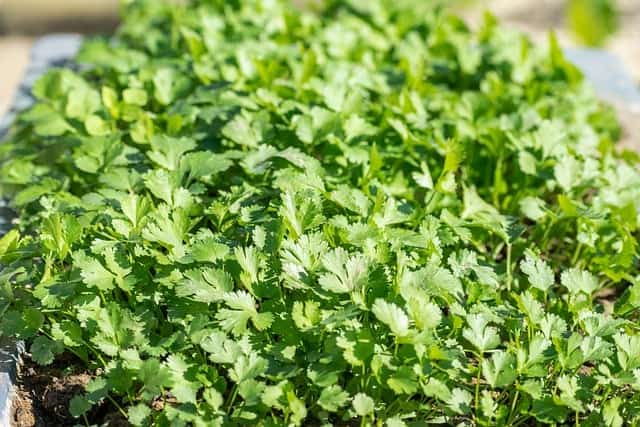Cilantro is a versatile herb that is used in many different cuisines around the world. It is known for its unique flavor and aroma, which can add depth and complexity to any dish.
However, one common problem that many gardeners and home cooks face is when the cilantro leaves start turning yellow. This can be a sign of a number of different issues, ranging from environmental factors to pests and diseases.
Understanding the causes of cilantro leaves turning yellow is the first step in addressing the issue. Some of the most common reasons for yellowing include overwatering, lack of nutrients, and insufficient sunlight.
It is important to identify the specific cause of the problem in order to determine the best course of action. In some cases, simple adjustments to the plant’s care routine may be enough to resolve the issue. In other cases, more intensive treatment may be necessary.
Caring for cilantro properly is key to preventing yellowing and other issues. This includes providing the plant with the right amount of water, sunlight, and nutrients, as well as protecting it from pests and diseases. With the right care, cilantro can thrive and provide a delicious addition to any meal.
Understanding Cilantro
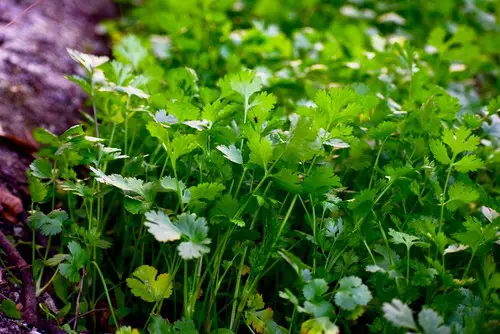
Cilantro, also known as coriander, is an annual herb that belongs to the Apiaceae family. It is a popular herb that is used in various cuisines around the world. Cilantro leaves are an essential ingredient in Mexican, Indian, and Thai dishes. The herb has a unique flavor that is described as citrusy, pungent, and slightly sweet.
Cilantro is a fast-growing herb that can grow up to 20 inches tall. It has delicate, lacy leaves that are bright green in color. The leaves are harvested when the plant is young, as they tend to become bitter as the plant matures.
Cilantro is a versatile herb that can be used in various ways. It is commonly used as a garnish for soups, stews, and salads. It is also used as a flavoring agent in salsa, guacamole, and other dips. The herb can be added to marinades, dressings, and sauces to add a fresh and zesty flavor.
Cilantro is a relatively easy herb to grow. It requires full sun to partial shade and well-drained soil. The plant prefers cool weather and does not tolerate heat well. It is important to keep the soil moist but not waterlogged, as overwatering can cause the roots to rot.
Despite its popularity, cilantro can be a finicky herb to grow. One common problem that gardeners face is the yellowing of cilantro leaves. This can be caused by various factors such as lack of nutrients, overwatering, pests and diseases, and environmental factors.
Understanding the needs of cilantro is crucial to maintaining a healthy plant. By providing the right amount of sunlight, water, and nutrients, gardeners can ensure that their cilantro plants grow strong and healthy.
Check out these other related posts:
Cilantro Leaves Turning Yellow – 4 Common Problems
Cilantro is a popular herb that is used in many dishes around the world. However, if the leaves of your cilantro plant are turning yellow, it can be a cause for concern. There are several reasons why cilantro leaves may turn yellow, including inadequate sunlight and heat, watering issues, soil and nutrient deficiencies, pests, and diseases.
1. Inadequate Sunlight and Heat
Cilantro requires a significant amount of sunlight to grow properly. If the plant is not getting enough sun, the leaves may start to turn yellow. In general, cilantro requires at least 4-6 hours of direct sunlight per day, although it can tolerate partial sun as well. Morning sun and afternoon shade are ideal for cilantro plants.
On the other hand, too much sun can also cause cilantro leaves to yellow. In hot climates, it is important to provide some shade for the plant during the hottest part of the day.
2. Watering Issues
Watering issues can also cause cilantro leaves to turn yellow. Overwatering can lead to root rot and other problems that can cause the leaves to turn yellow and wilt. On the other hand, underwatering can cause the leaves to dry out and turn yellow as well.
Cilantro plants prefer well-drained soil that is moist but not waterlogged. It is important to water the plant consistently and avoid letting the soil dry out completely.
3. Soil and Nutrient Deficiencies
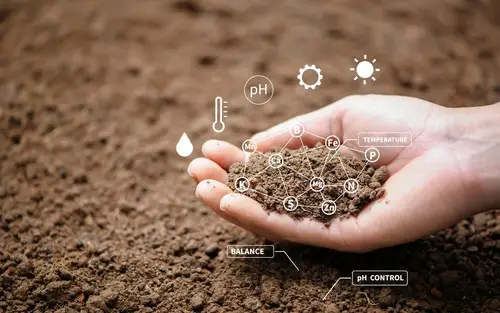
Cilantro plants require a variety of nutrients to grow properly. If the soil is deficient in certain nutrients, the leaves may start to turn yellow. Nitrogen is one of the most important nutrients for cilantro plants, and a lack of nitrogen can cause the leaves to turn yellow and stunt the growth of the plant.
Adding compost or organic matter to the soil can help improve soil quality and provide the necessary nutrients for the plant. Additionally, adding nitrogen fertilizer can help correct a nitrogen deficiency.
4. Pests and Diseases
Pests and diseases can also cause cilantro leaves to turn yellow. Aphids, spider mites, and whiteflies are common pests that can infest cilantro plants and cause the leaves to yellow. Additionally, fungal diseases like powdery mildew and downy mildew can also lead to yellowing of leaves.
To prevent pest infestations and diseases, it is important to inspect the plant regularly and use organic pest control methods like neem oil or insecticidal soap. If the plant is already infected, it may be necessary to remove the affected leaves or use a fungicide to treat the disease.
Caring for Cilantro
Cilantro is a popular herb used in many dishes, but it can be frustrating when the leaves start turning yellow. Proper care can help prevent this issue and keep your cilantro healthy and vibrant.
1. Growing Cilantro
Cilantro is an easy herb to grow and can be grown both indoors and outdoors. It prefers full sun, but can also grow in partial sun. The plant should be watered regularly and the soil should be kept moist but not waterlogged. Overwatering can lead to root rot and yellowing leaves.
2. Fertilizing Cilantro
Cilantro does not require much fertilizer, but a balanced fertilizer can be applied once a month during the growing season. Be sure to follow the instructions on the fertilizer package to avoid over-fertilizing, which can lead to yellowing leaves and other issues.
3. Environment and Pruning
Cilantro prefers a cool environment with temperatures between 50-85°F. If the temperature gets too high, the plant may start to droop and the leaves may turn yellow. Pruning can also help prevent yellowing leaves by promoting new growth and preventing the plant from becoming too leggy.
4. Humidity and Potting Mix
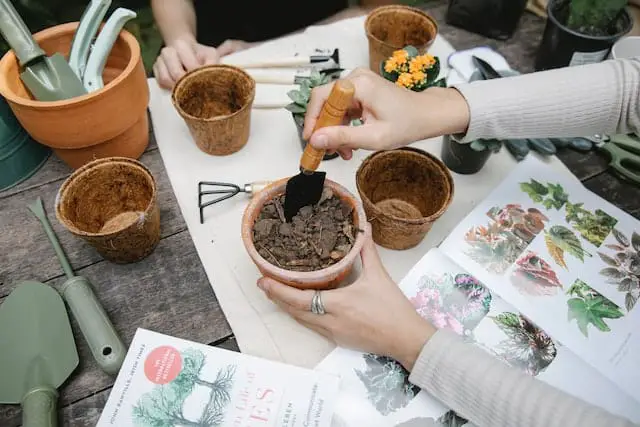
Cilantro prefers moderate humidity levels, so it is important to keep the soil moist and the air around the plant humid. A well-draining potting mix is also important to prevent overwatering and root rot. If the potting mix does not have enough oxygen, the leaves may start to turn yellow.
5. Repotting and Container Gardening
If your cilantro is in a pot without drainage, it may be prone to overwatering and yellowing leaves. Repotting the plant into a container with drainage holes can help prevent this issue. Cilantro can also be grown in a vegetable garden or in a container garden with other herbs and vegetables.
Prevention and Treatment
To prevent cilantro leaves from turning yellow, it is important to provide optimal growing conditions. Cilantro thrives in cool temperatures and requires at least four to six hours of direct sunlight daily.
If the plant is exposed to too much sun, it can wilt and develop yellow leaves. Therefore, it is recommended to grow cilantro in a shaded area or provide some shade during the hottest parts of the day.
Using a balanced fertilizer can also help prevent yellowing of cilantro leaves. Organic fertilizers are safe to use and can provide the necessary nutrients for healthy growth. It is recommended to apply fertilizer once every two weeks during the growing season.
Pruning is an effective way to promote healthy growth and prevent yellowing of leaves. Removing any yellow or damaged leaves can help the plant focus its energy on producing new growth. Additionally, pruning can prevent the plant from becoming too tall and leggy, which can lead to yellowing of leaves.
Mulching around the base of the plant can help retain moisture and prevent weeds from competing for nutrients. It is recommended to use organic mulch, such as straw or grass clippings, which can also provide additional nutrients as they decompose.
If the cilantro plant is already showing signs of yellowing, there are several treatment options available. First, it is important to remove any weeds or dead plant material from around the base of the plant. This can help prevent the spread of disease and improve air circulation.
If the yellowing is due to a lack of nutrients, applying a balanced fertilizer can help promote healthy growth. Alternatively, if the plant is being overwatered, reducing the frequency of watering can help prevent further yellowing.
In some cases, cilantro plants may be dying and cannot be revived. In this case, it is recommended to harvest any remaining healthy leaves before removing the plant entirely. It is important to note that cilantro leaves are safe to eat, even if they are slightly yellow. However, it is recommended to remove any yellow or damaged leaves before consuming.
Cilantro in Cooking
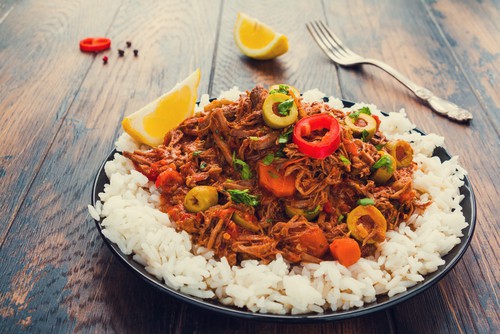
Cilantro is a versatile herb that is widely used in cooking. It adds a unique flavor to dishes and is commonly used in Mexican, Indian, and Southeast Asian cuisines. The herb is also known as coriander and is a member of the parsley family.
The leaves of cilantro are the most commonly used part of the plant. They have a bright, citrusy flavor that pairs well with many different types of dishes. Cilantro is often used in salads, salsas, and guacamole. It is also used as a garnish for soups, stews, and curries.
Cilantro is a leafy green herb that can be used fresh or dried. Fresh cilantro has a much stronger flavor than dried cilantro, so it is often preferred in cooking. The herb should be added to dishes towards the end of cooking to preserve its flavor.
When using cilantro in cooking, it is important to remember that the herb can be overpowering if used in excess. A little bit of cilantro goes a long way, so it is important to use it sparingly.
Frequently Asked Questions
How can I prevent my cilantro leaves from turning yellow?
To prevent cilantro leaves from turning yellow, ensure that the plant is getting enough sunlight, water, and nutrients. Cilantro requires at least six hours of sunlight per day, and the soil should be kept moist but not waterlogged. Fertilize the plant with a balanced fertilizer every four to six weeks.
What are some common causes of cilantro leaves turning yellow?
Cilantro leaves can turn yellow due to a variety of reasons, including lack of sunlight, overwatering, nutrient deficiency, and pest infestation. It is essential to identify the underlying cause of yellowing before taking corrective action.
Is it possible to revive cilantro leaves that have turned yellow?
It is possible to revive cilantro leaves that have turned yellow by identifying the underlying cause and taking corrective action. For example, if the cause is overwatering, reduce watering frequency and ensure proper drainage. If the cause is nutrient deficiency, fertilize the plant with a balanced fertilizer.
What can I do if my cilantro plant is wilting?
If a cilantro plant is wilting, it may be due to lack of water or too much water. Check the soil moisture level and adjust watering accordingly. Wilting can also be a sign of pest infestation or disease, so inspect the plant for any signs of damage or discoloration.
Why do herb leaves, including cilantro, turn yellow?
Herb leaves can turn yellow due to a variety of reasons, including lack of sunlight, overwatering, nutrient deficiency, and pest infestation. Yellowing leaves can also be a sign of aging or natural shedding.
How often should I water my cilantro plant to prevent yellowing leaves?
Cilantro plants should be watered when the soil feels dry to the touch. It is essential to avoid overwatering, as this can lead to root rot and yellowing leaves. In general, cilantro plants should be watered every two to three days, depending on the weather conditions and soil type.

Hey, I’m Lisa and I’ve been an avid gardener for over 30 years. I love writing, talking and living in the garden! Feel free to connect with me on my socials below

